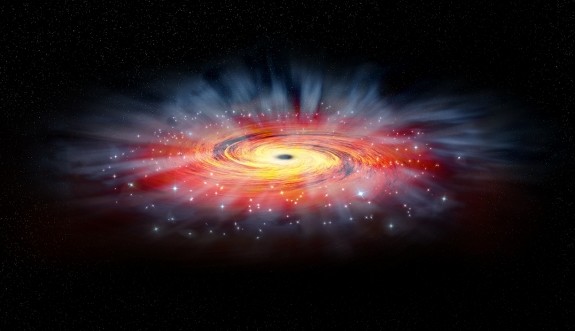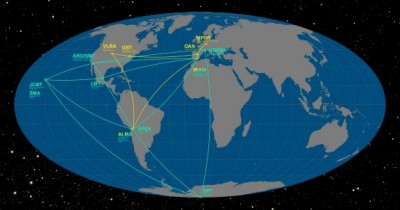Virtual telescope makes first image of a black hole
on

A powerful network of radio telescopes, spread around our planet, attempts for the first time to create an image of a black hole. Black holes are intangible gravitational ‘vanishing holes’, the existence if which was already predicted in 1915 by Albert Einstein. The South Pole Telescope of the University of Chicago is part of this Event Horizon Telescope, in which eight observatories, spread across six widely dispersed locations, together form a single virtual telescope, which is so powerful (has sufficiently great resolving power) that it could detect a penny on the surface of the moon.
In April of this year, over a period of ten days, researchers collected data from Sagittarius A*, a black hole at the center of our Milky Way (at a distance of about 26000 lightyears away from us), as well as the super-heavy black hole at the center of the galaxy with the name M87.

Each of the participating observatories collected so much raw data that this could not be transmitted by electronics means, instead all the data was written to more than 1000 hard disks, and subsequently transported by airplane to the analysis center for the project (the MIT Haystack-observatory Westford, Massachusetts and the Max Planck-institute for radio-astronomy in Bonn). In the coming year, super computers will correlate the data, combine it and interpret it using a technique that is called Very Long Baseline Interferometry, a technique that is already very common in radio-astronomy but has never been used on such a large scale. It is the intention to form an image of the event horizon, the boundary of a black hole from which nothing (not even light) can escape and infalling gases are heated to tens of millions of degrees.


Discussion (0 comments)